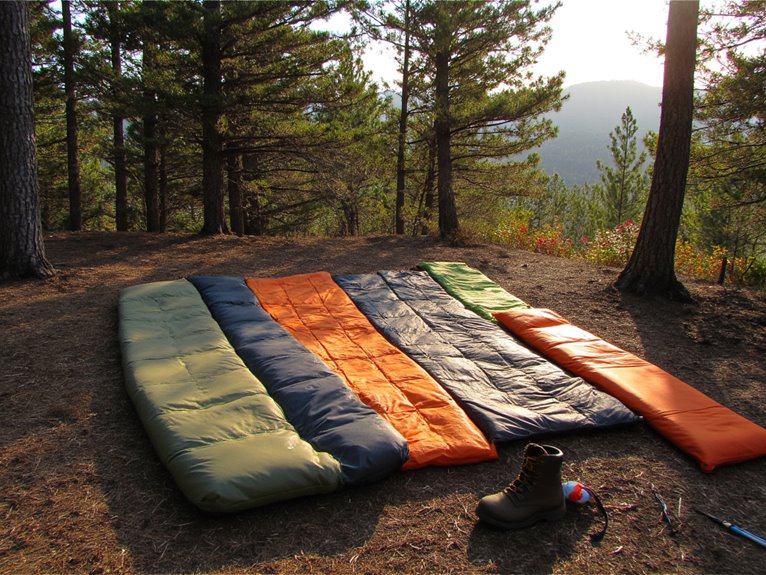What Is the Difference Between Molle and Webbing?
MOLLE (Modular Lightweight Load-carrying Equipment) and webbing are two distinct load-carrying systems that have evolved separately, each with their unique design, construction, and attachment methods. MOLLE features a grid of woven nylon straps for customizable pouch attachment, while webbing is a single, continuous strip of fabric used to create a load-bearing system. The two systems cater to different user needs and applications, with MOLLE offering more adaptability and webbing providing greater load-bearing capacity. Understanding their differences is essential for selecting the right system for a specific application or mission, and exploring their unique characteristics can reveal the full potential of each system.
We are supported by our audience. When you purchase through links on our site, we may earn an affiliate commission, at no extra cost for you. Learn more. Last update on 8th January 2026 / Images from Amazon Product Advertising API.
History of MOLLE and Webbing
The concept of load-carrying systems, including MOLLE (Modular Lightweight Load-carrying Equipment) and webbing, has a rich history dating back to the early 20th century, with significant advancements made during World War I and II.
Initially, soldiers used makeshift equipment to carry their gear, leading to the development of more organized systems.
During World War II, the US military introduced the 'belt, suspenders, and backpack' system, which improved load distribution and comfort.
The Vietnam War saw the introduction of nylon webbing, which replaced cotton and leather components.
These innovations paved the way for modern load-carrying systems, including MOLLE, which was introduced in the 1990s.
Throughout its evolution, the focus has been on creating lightweight, durable, and adaptable systems that improve soldier mobility and comfort.
Design and Construction Differences
Modularity, a hallmark of modern load-carrying systems, is achieved through meticulous design and construction differences between MOLLE and webbing.
MOLLE (Modular Lightweight Load-carrying Equipment) features a grid of woven nylon straps, allowing for the attachment of pouches and accessories.
In contrast, webbing is a single, continuous strip of fabric used to create a load-bearing system.
MOLLE's modular design enables users to customize their load-out, adding or removing components as needed.
Webbing, on the other hand, is often used in more static configurations.
The construction of MOLLE gear typically involves reinforced stitching and bar-tacking to reinforce durability, whereas webbing may employ simpler stitching techniques.
These design and construction differences substantially impact the functionality and versatility of each system.
Attachment Methods Compared
Pouches and accessories are secured to MOLLE gear using a system of horizontal rows of heavy-duty nylon straps, whereas webbing-based systems often rely on snap links, carabiners, or other metal hardware to facilitate attachment.
This fundamental difference in attachment methods has significant implications for users.
MOLLE's strap-based system allows for a more modular and adaptable setup, enabling users to easily add or remove pouches and accessories as needed.
In contrast, webbing-based systems often require more permanent attachments, limiting the flexibility of the setup.
Understanding these differences is vital for selecting the right system for a specific application or mission.
Load-Bearing Capacity Explained
Load-bearing capacity, a critical consideration in MOLLE and webbing systems, refers to the maximum weight that a given system can safely support without compromising its structural integrity.
This capacity is determined by the material, design, and construction of the system's components, such as straps, buckles, and attachments.
A system's load-bearing capacity is typically measured in pounds or kilograms and is often specified by the manufacturer.
Understanding a system's load-bearing capacity is vital to guarantee safe and reliable use, particularly in applications where heavy loads are involved.
Exceeding a system's load-bearing capacity can lead to failure, damage, or even injury.
Popular Uses for MOLLE Systems
MOLLE systems have proven to be highly versatile and are routinely employed in various applications, including military, outdoor, and emergency response operations, where their adaptability and customizability are particularly valuable.
In these contexts, MOLLE systems enable users to efficiently carry and organize essential gear, such as first aid kits, communication devices, and ammunition.
Additionally, MOLLE systems are used by outdoor enthusiasts, such as hikers and campers, who appreciate the flexibility and convenience of being able to customize their gear setup.
In addition, search and rescue teams, as well as law enforcement agencies, also utilize MOLLE systems due to their reliability and ease of use in high-pressure situations.
Webbing Applications and Advantages
In terms of webbing applications, several key advantages emerge.
The load-bearing capacity of webbing, for instance, enables it to support substantial weights, making it an ideal material for various outdoor and industrial uses.
Additionally, webbing's durability and versatile attachment options have led to its widespread adoption in a range of industries.
Load Bearing Capacity
Webbing's ability to distribute weight evenly across its surface area makes it an ideal material for applications where heavy loads need to be supported.
This load-bearing capacity is vital in various industries, such as outdoor gear, search and rescue, and military operations.
Webbing can withstand heavy weights without compromising its structural integrity, making it a reliable choice for critical applications.
Additionally, the even distribution of weight reduces the risk of point-loading, which can cause material failure.
This load-bearing capacity, combined with webbing's durability and versatility, makes it an essential component in many industries.
Webbing's load-bearing capacity is a key factor in its widespread adoption and popularity.
Material Durability Test
To guarantee the reliability of webbing in critical applications, a rigorous material durability test is essential to evaluate its performance under various environmental and mechanical stressors.
This test assesses the webbing's resistance to abrasion, UV degradation, water absorption, and extreme temperatures.
The test also evaluates the webbing's tensile strength, elasticity, and resistance to chemicals and fuels.
By subjecting the webbing to these stressors, manufacturers can identify potential weaknesses and enhance the material's overall durability.
The results of the material durability test provide valuable insights for optimizing webbing design, material selection, and manufacturing processes.
This verifies that webbing products meet the required safety and performance standards for various industries, including outdoor gear, military equipment, and search and rescue operations.
Versatile Attachment Options
By incorporating versatile attachment options, webbing manufacturers can substantially expand the functionality of their products, allowing for a wide range of applications across various industries.
This adaptability enables webbing to be used in various settings, from outdoor gear to medical equipment.
Some key benefits of versatile attachment options include:
Customizable configurations: Webbing can be tailored to meet specific requirements, ensuring a secure and reliable connection.
Easy integration: Webbing can be easily integrated with other components, streamlining the assembly process.
Improved safety: Versatile attachment options enable the creation of fail-safe systems, reducing the risk of accidents.
Enhanced performance: By allowing for adjustments and fine-tuning, webbing can optimize the performance of attached equipment.
Choosing the Right System for You
Selecting the ideal molle and webbing system for your specific needs requires careful evaluation of several key factors.
First, think about the intended use of the system, such as hiking, military, or everyday carry.
Next, ponder the type of gear you need to carry and the weight capacity required.
Additionally, reflect on the environment you'll be operating in, as well as any specific regulations or standards that need to be met.
It's also essential to ponder your personal preferences, such as comfort, adjustability, and durability.



